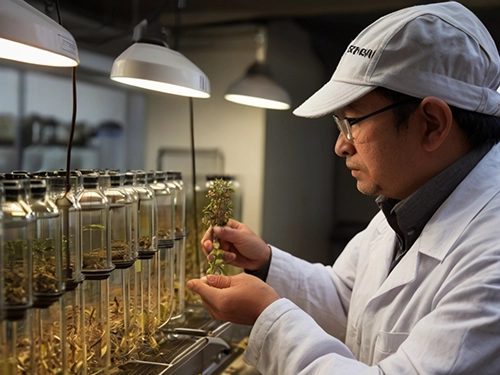In an era where sustainability is not just a choice but a necessity, the intersection of artificial intelligence (AI) and machine learning (ML) with bioenergy research presents a beacon of hope. This fusion of cutting-edge technology and environmental science is more than just a trend; it’s a revolution in approaching energy challenges. As we delve into this transformative journey, we uncover how AI and ML aid and fundamentally reshape bioenergy research. These technologies are at the forefront of a sustainable energy future, from optimizing crop yields to revolutionizing biomass processing.
The original article, “Executive Summary: Overcoming Barriers in Plant Transformation: A Focus on Bioenergy Crops,” provides a comprehensive overview of the current state and potential of AI and ML in bioenergy research. This new article aims to expand upon these insights, exploring the multifaceted roles of AI and ML in this critical field and how they pave the way for groundbreaking advancements in bioenergy.
The Role of AI and ML in Bioenergy Research
- Enhancing Crop Yields and Resilience: AI and ML are instrumental in analyzing vast amounts of data on crop genetics, soil health, and environmental factors. This analysis leads to the development of bioenergy crops with higher yields and greater resilience to climate change, pests, and diseases.
- Streamlining Biomass Processing: Biomass processing into biofuels is complex and resource-intensive. AI and ML algorithms optimize these processes, reducing energy consumption and increasing efficiency, making bioenergy more viable and cost-effective.
- Predictive Analytics for Sustainable Practices: Predictive models powered by AI and ML enable researchers to forecast crop growth patterns, weather impacts, and resource needs. This foresight is crucial for sustainable and efficient bioenergy production.
Overcoming Challenges with Innovative Solutions
Despite the promise, integrating AI and ML into bioenergy research is challenging. Data quality, computational requirements, and the need for interdisciplinary collaboration are significant hurdles. However, innovative solutions are emerging:
- Advanced Data Collection and Analysis: Developing sophisticated sensors and data collection methods enhances the quality and quantity of data available for AI and ML algorithms, leading to more accurate and actionable insights.
- High-Performance Computing Infrastructure: Investments in high-performance computing infrastructure are essential to handle the computational demands of complex AI and ML models, enabling faster and more efficient data processing.
- Fostering Interdisciplinary Collaboration: Encouraging collaboration between computer scientists, biologists, and environmental scientists is key to addressing bioenergy research’s multifaceted challenges and leveraging AI and ML’s full potential.
The Future of Bioenergy: AI and ML at the Helm
As we look to the future, the role of AI and ML in bioenergy research is poised to grow exponentially. These technologies offer a pathway to more sustainable, efficient, and cost-effective bioenergy solutions. By embracing AI and ML, researchers and industry leaders can unlock the full potential of bioenergy, contributing significantly to global sustainability goals.
Integrating AI and ML in bioenergy research is not just a scientific endeavor but a commitment to a sustainable future. The possibilities are limitless as we continue to explore and innovate in this field. For those interested in delving deeper into this fascinating intersection of technology and environmental science or for opportunities to collaborate and contribute, feel free to reach out and join this exciting journey toward a greener tomorrow.







